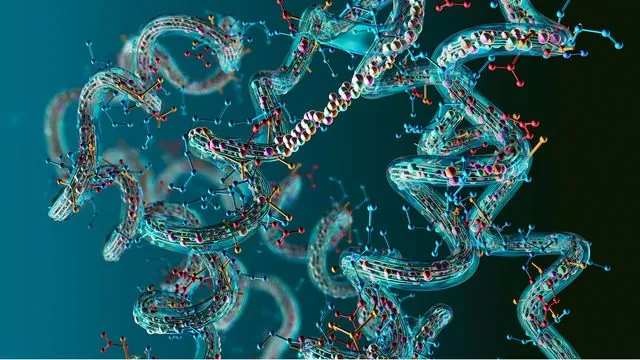
Unlocking the Mystery: How Small Amino Acids Keep Proteins Stable!
2025-09-15
Author: Noah
For decades, scientists have used amino acids as stabilizers in medical formulations like insulin, preventing proteins from interacting in undesirable ways. But the big question has always been: How do they actually work?
Now, an international team led by the Supramolecular Nano-Materials and Interfaces Laboratory at EPFL has cracked the code! Their groundbreaking findings shed light on a fundamental stabilizing effect that all small molecules possess in solution, as detailed in their latest publication in *Nature*. Collaborating with experts from MIT and the Southern University of Science and Technology in China, including EPFL alumnus Zhi Luo, they unveiled these essential truths.
Recent PhD graduate Ting Mao explains, "Traditionally, it was believed that amino acids help prevent proteins from misfolding during their shape-shifting dance in solution. But we have discovered that their stabilizing effect isn’t just a biological phenomenon—it’s a universal property of small molecules acting in relation to larger particles, known as colloids."
The Dynamics of Attraction and Repulsion
To illustrate this colloidal effect, Francesco Stellacci, head of the laboratory, offers a relatable analogy. Picture two colleagues in a hallway, eager to chat. If the hallway is empty, they easily spot each other. But if it's packed with people, they may pass right by without noticing one another. This "screening attraction" explains how amino acids enhance protein stability by crowding the space around larger particles.
Stellacci continues, "Our ultimate goal is to predict which molecules can stabilize proteins and how effectively. Currently, this is often a process of trial and error in biomedical research.”
Amino Acids vs. Salts: The Anti-Salt Effect
For over a century, scientists have recognized that salts work to screen repulsion, preventing two unfriendly particles from interactions. In the same way, amino acids act as the "anti-salt," promoting stability instead. This has been observed in nature: when plants are watered with saline solutions, they produce more amino acids to counteract stress from salt concentrations.
Towards Rigorous Reporting in Science
The researchers emphasize the importance of accurately reporting amino acid concentrations in scientific studies. Stellacci notes, "Just as ionic (salt) concentrations are crucial for experimentation, amino acid concentrations impact outcomes and should be reported with equal care."
With a newly funded ERC Advanced Grant, Stellacci plans to explore the untapped potential of these molecular interactions further. “We are eager to find out how small molecules like amino acids are essential for healthy biological functions and aim to predict the stabilization capacity of various molecules. This knowledge could revolutionize our approach in biomedical research.”









 Brasil (PT)
Brasil (PT)
 Canada (EN)
Canada (EN)
 Chile (ES)
Chile (ES)
 Česko (CS)
Česko (CS)
 대한민국 (KO)
대한민국 (KO)
 España (ES)
España (ES)
 France (FR)
France (FR)
 Hong Kong (EN)
Hong Kong (EN)
 Italia (IT)
Italia (IT)
 日本 (JA)
日本 (JA)
 Magyarország (HU)
Magyarország (HU)
 Norge (NO)
Norge (NO)
 Polska (PL)
Polska (PL)
 Schweiz (DE)
Schweiz (DE)
 Singapore (EN)
Singapore (EN)
 Sverige (SV)
Sverige (SV)
 Suomi (FI)
Suomi (FI)
 Türkiye (TR)
Türkiye (TR)
 الإمارات العربية المتحدة (AR)
الإمارات العربية المتحدة (AR)